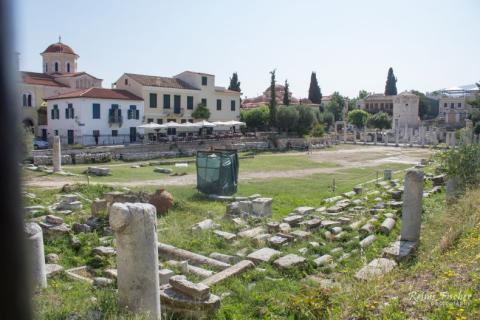The Ancient Agora of Classical Athens is the best-known example of an ancient Greek agora, located to the northwest of the Acropolis and bounded on the south by the hill of the Areopagus and on the west by the hill known as the Agoraios Kolonos, also called Market Hill.
It was at the start of June, when I first visited Athens, Greece during a brief layover flight to the island of Crete, see About Tbilisi - Athens - Chania (Greece) flight by Aegean Airlines. We had about 10 hours between our connecting flight, once we left Athens airport we took the metro to the city center and just explored, without any particular goal or something.
We found ourselves visiting Ancient Agora of Athens site, pretty cool right?
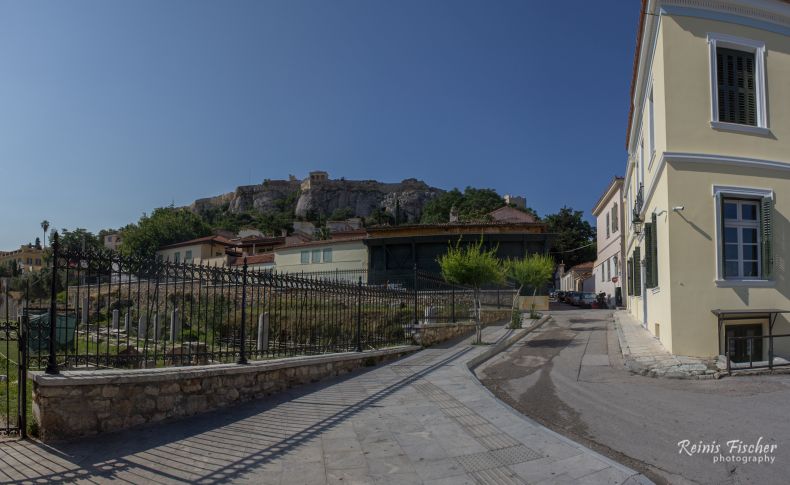
View towards Ancient Agora of Athens
After an hour of wanderings around narrow streets of Athens, we finally noticed this place.
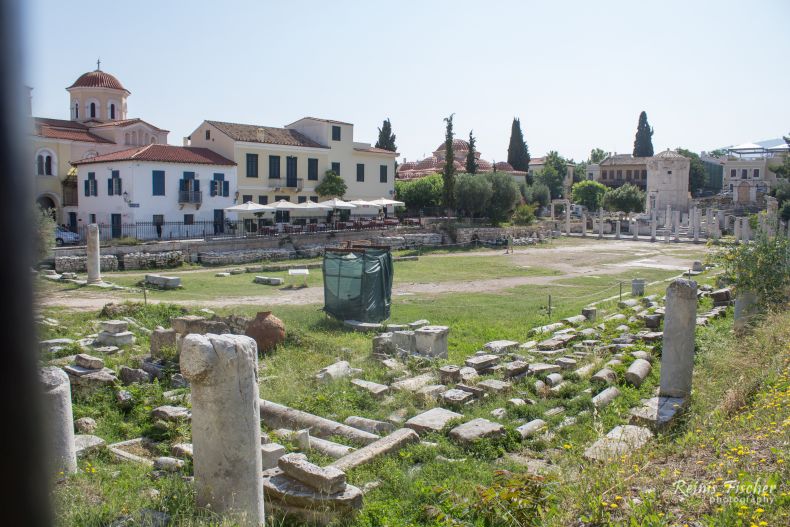
Excavations at Athenian Agora
The ancient Athenian agora has been excavated by the American School of Classical Studies at Athens since 1931 under the direction of T. Leslie Shear, Sr. They continue to the present day, now under the direction of John McK Camp.
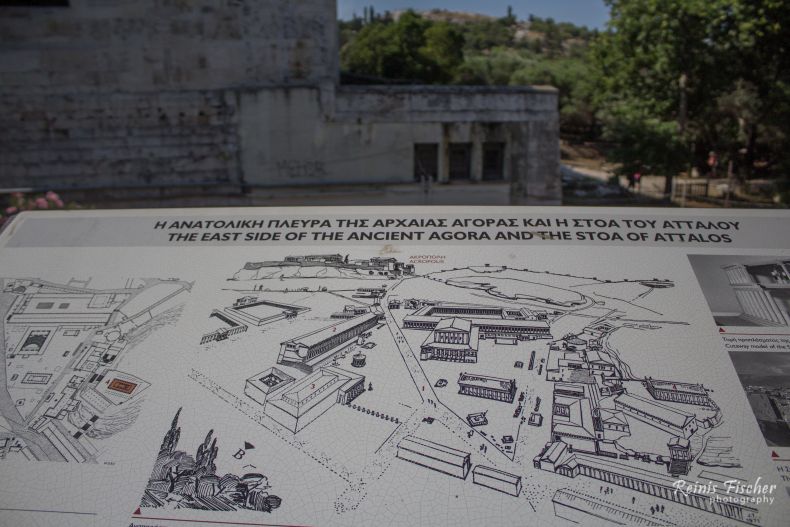
Territory plan at Ancient Agora
After the initial phase of excavation, in the 1950s the Hellenistic Stoa of Attalos was reconstructed on the east side of the agora, and today it serves as a museum and as storage and office space for the excavation team.
A virtual reconstruction of the Ancient Agora of Athens has been produced through a collaboration of the American School of Classical Studies at Athens and the Foundation of the Hellenic World, which had various output (3d video, VR real-time dom performance, Google Earth 3d models).
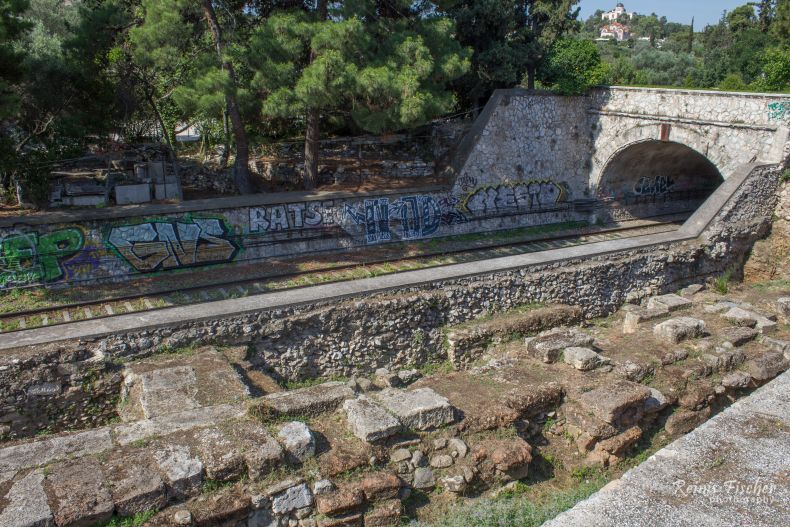
Railroad near Ancient Agora in Athens
Pretty cool combinations - where Ancient world meets modern.
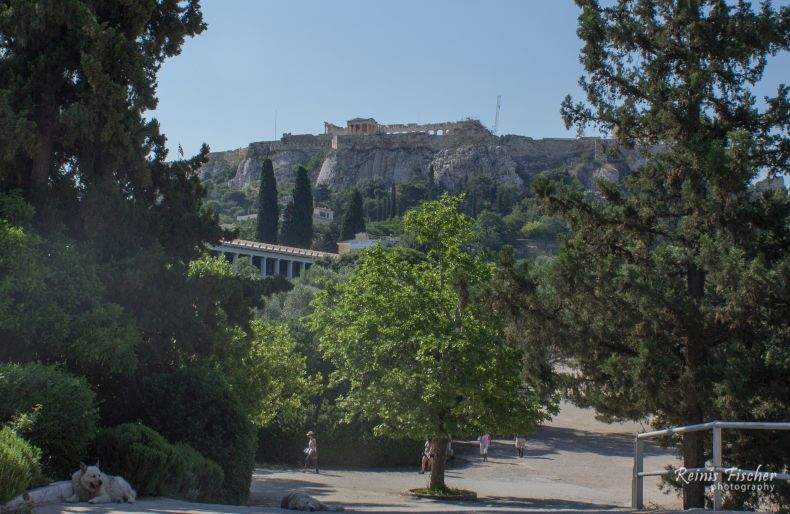
View towards temple

Panoramic photography
Made a quick hand held panoramic photography.
The museum is housed in the Stoa of Attalos, and its exhibits are connected with the Athenian democracy. The collection of the museum includes clay, bronze and glass objects, sculptures, coins and inscriptions from the 7th to the 5th century BC, as well as pottery of the Byzantine period and the Turkish occupation.
